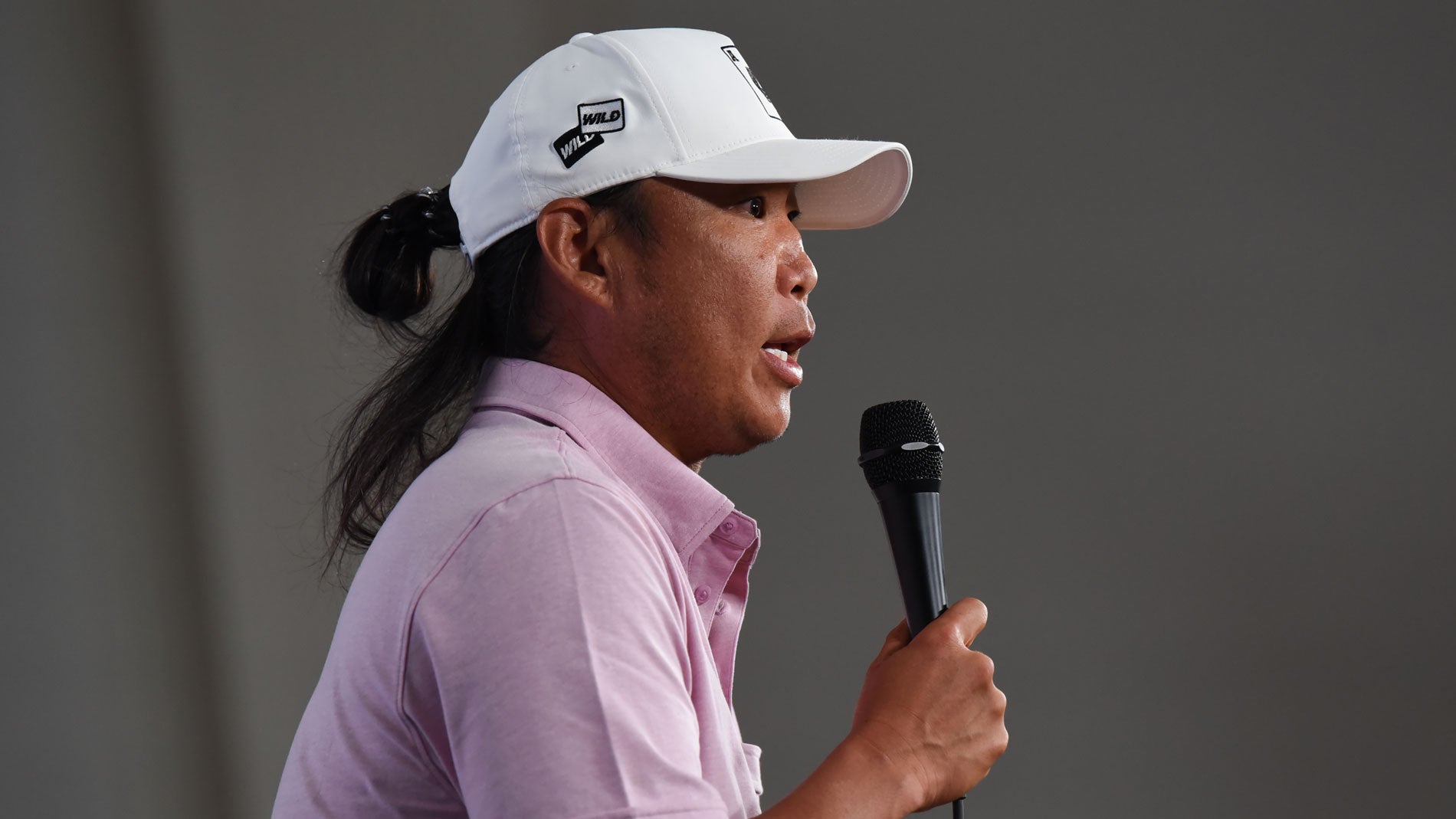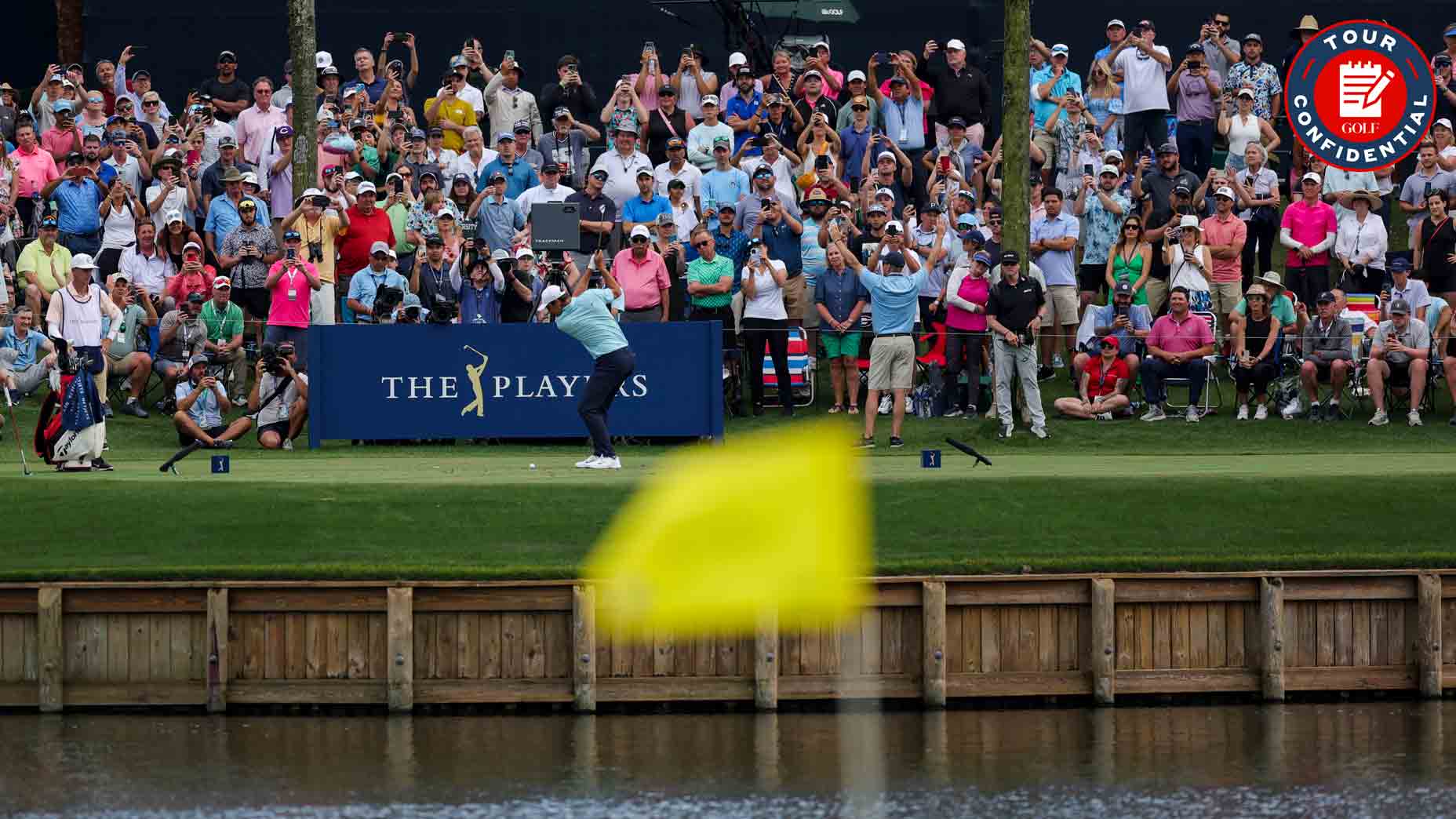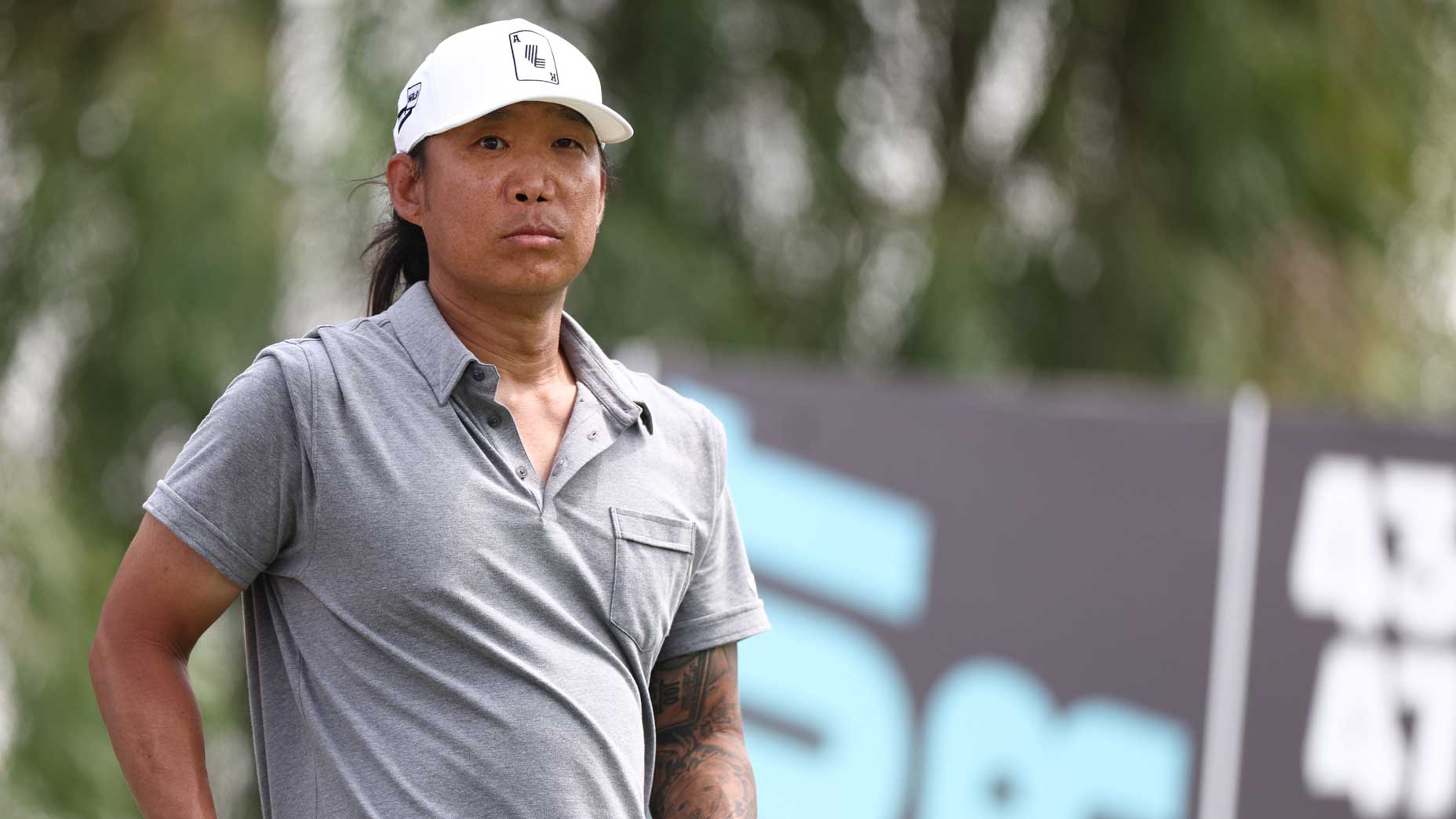Anthony Kim might return to pro golf. What’s his value if he does?

Anthony Kim never shied from bringing the bling.
getty images
On Nov. 12, 1934, Everett Ruess, a 20-year-old poet and artist with an insatiable wanderlust, set out solo from Escalante, Utah, to explore the inhospitable desert in the southwest corner of the state. Ruess had told his parents he would be uncontactable for 10 weeks, but when his return date came and passed and there was no word from the young expeditioner, the hunt was on. Search parties scoured the area for months but turned up only Ruess’ travel mates: his two donkeys.
As the years passed, various theories surfaced about Ruess’ fate — flashflood drowning, rattlesnake bite, murder — and his disappearance became a source of great intrigue. The collection of chronicles about Ruess’ tale includes at least a dozen books, several podcasts and one 2014 song by country artist Dave Alvin.
And folks said, he’s just another wild kid
He’ll grow out of it in time?
But they never found my body, boys
Or understood my mind
Ruess’ cult following came to my attention the other day by way of Rick Burton, a professor of sport management at Syracuse University’s David B. Falk College of Sport and Human Dynamics. I had called Burton to discuss the potential reemergence of the über-popular and über-mysterious golfer, Anthony Kim, who has not played in a PGA Tour event since 2012 but who, according to reporting by my colleague Dylan Dethier, has been weighing the prospect of a comeback, either by way of the PGA Tour or its deep-pocketed rival, LIV Golf. When I asked Burton to assess Kim’s Q rating and marketability after what has been a 12-year absence from professional golf, the professor immediately drew parallels between Kim and Ruess.
“When you have an individual who exists and then suddenly disappears, that makes for a great American story,” he said. “It’s like, where did you go? Who are you? What happened to you? Because we don’t know the answers, we get a little more interested.”
In Kim’s case, golf fans have become a lot more interested, because Kim, who became the first player since Tiger Woods to win three PGA Tour titles before the age of 25 and the first, period, to do it with his initials emblazoned on his belt buckle, didn’t just retire at an age when most golfers are just hitting their strides — A.K. went full J.D. (as in Salinger), withdrawing almost entirely from the public eye. No weepy press-conference farewell. No gratitude-laden social-media post to his fans. No explanation. Just poof, gone, without leaving us even a couple of mules. Nagging injuries undoubtedly drove Kim’s retreat, and reportedly so, too, did an insurance policy from which Kim has profited under the condition that he doesn’t return to the pro game.
But though Kim let go of the golf world, the golf world has refused to let go of him. All these years later, a rabid subsection of golf fans remains rapt by why the now 38-year-old went dark, how he has been filling his time and how much game he still possesses. That last question is perhaps the most tantalizing, which is why Golf X (née Twitter) was foaming at the mouth when details of a potential AK comeback surfaced.
And if Kim does return?
Yep, still more questions will follow.
Among them: What, after such so much time in the wilderness, is Kim’s marketability? How much of his brand is wedded to his disappearance? And would sponsors be giddy to align with him…or wary?
In short, can AK still be AK?
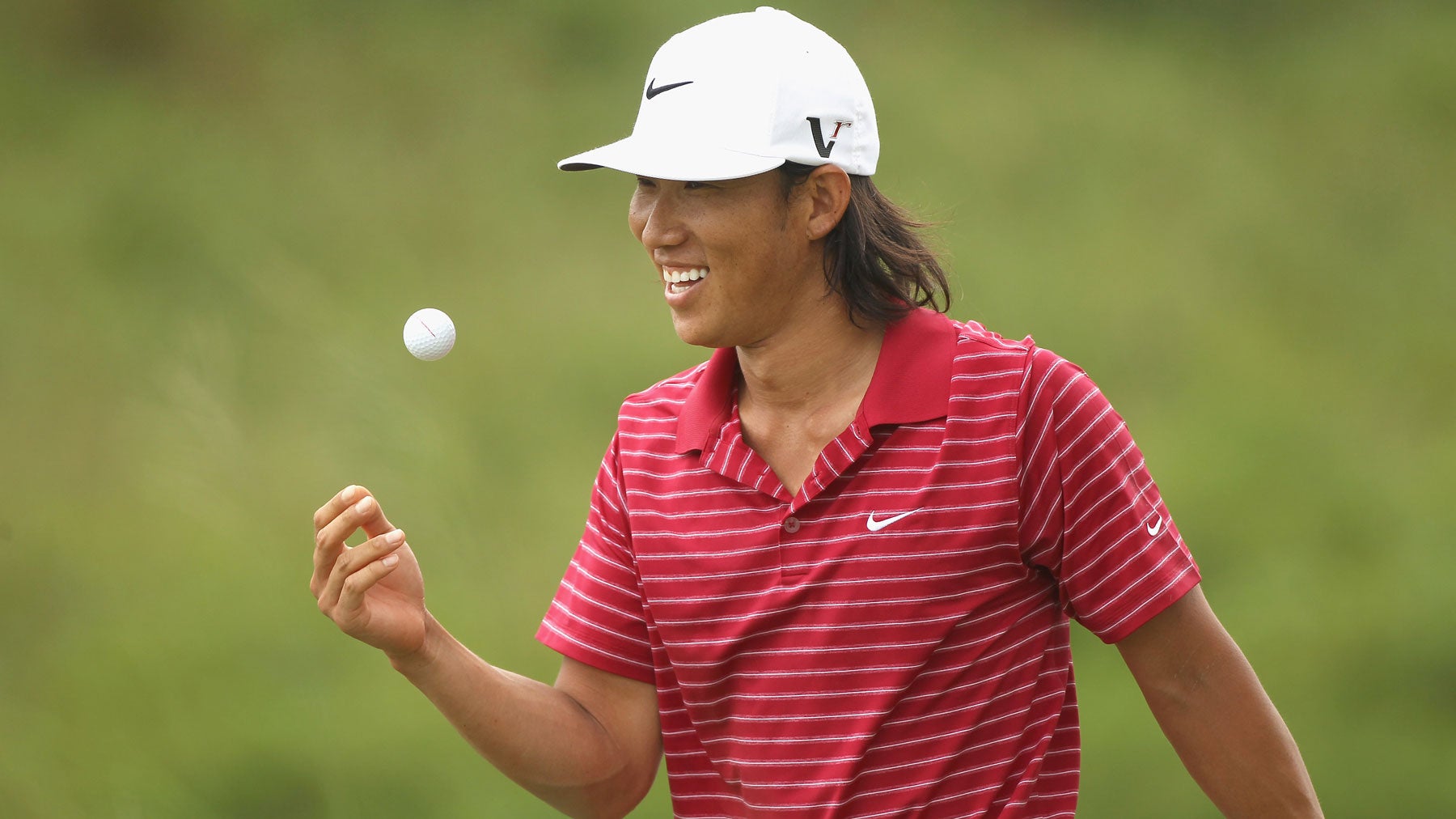
A FEW DAYS AFTER THE Kim news broke, I spoke with a veteran golf agent about the potential for a Kim return and how 2024 AK might play in the marketplace. (The agent requested anonymity, which is not uncommon when it comes to golf insiders opining about the one-time wunderkind.) His read was that Kim, in fact, wasn’t all that serious about rejoining the competitive fray. But the next morning, the agent called me back from Mexico, where he was on site at LIV’s season opener. From conversations he had had at the event, the agent now believed the possibility of a Kim revival was very real. The biggest holdup, the agent had learned, was Kim’s indecision over whether to sign a deal with LIV or negotiate a path back to his old home on the PGA Tour. Each has its own appeal.
With a LIV deal would come guaranteed cash and, according to Dethier’s report, a make-good for the insurance money he would forfeit. With PGA Tour starts — Kim, at least for a period, would have a stack of sponsor’s invites — would come an easier route by which to attract meaningful sponsor dollars. Which brands would be inclined to back him, though, is unclear. When a brash and blinged-out Kim was at the height of his powers, he had lucrative deals with Nike (clubs and apparel) and Royal Bank of Canada (on his bag). But today, with no evidence whether Kim can still play at a high level, blue-chip companies likely will be reluctant to stake him out of the gate.
“Nike’s not going to come back and write a big check to him, I can tell you that, and I don’t know who would,” the agent told me. “Someone might get involved just because of the splash of it, but he’s got to prove he can compete. He’s been gone a long time. He’s 38. Even if he’s been playing all this time, at 38 it’s tough to compete.”
Kim played his last PGA Tour round on May 3, 2012. If, hypothetically, he made his return at LIV’s Saudi Arabia event, which starts on March 1, his tour-level competitive sabbatical would end at 4,320 days, a lifetime layoff by professional sports’ standards.
Ask Björn Borg, who, in 1983, stunned the tennis world by retiring at 26. Ten years later, the follically-blessed Swede made a brief comeback attempt at a tournament in Monte Carlo; playing with an outdated wooden racket, Borg lost in straight sets. As The Guardian reported years later, “A couple of other similar defeats and the cringe-inducing return was over.”
That’s not to say aging athletes can’t successfully come back. Michael Jordan, at 38, emerged from a two-plus-year retirement and became an MVP candidate for the Washington Wizards. Hockey great Mario Lemieux hung up his skates for nearly four years before returning to the ice at 35; in his first season back, in 2000-01, he accumulated 76 points in just 43 games. The boxer George Foreman retired at 28 before returning to the ring a decade later; at 45, he became the oldest-ever heavyweight champion.
We’d cite a golf comp but there aren’t any. No golfer has taken off anywhere close to 12 years and tried to compete again at the highest levels. That’s in part because even if a former Tour player was motivated to try it, he or she would likely have no place to play. Kim has choices not because he’s a former PGA Tour winner but because of the intense fan interest his years in hiding has generated. Both LIV and the PGA Tour know he will attract eyeballs — assuming, that is, his game is competent.
Kim’s on-course success would, of course, also influence sponsor interest. As Tiger likes to say, winning takes care of anything, and, in Kim’s case, even a few top-10s might take of everything. Still, sports marketing experts believe some companies might be willing to take a flier on Kim even before he has had a chance to prove himself.
“There’s going to be companies that will be knocking on his door and there are probably companies knocking already, willing to take that risk because of his story,” said Lisa Delpy Neirotti, director of sport management programs at George Washington University, in Washington, D.C., and who happened to be on site for Kim’s second Tour win, at the 2008 AT&T National at Congressional. “He has a great story, and a major part of marketing right now is storytelling.”
Added Burton, the Syracuse professor: “He’s going to be affordable. So in a lot ways it’s low risk, taking a chance on a guy who’s got some brand recognition, more so than an unknown who’s up and coming. And you might be able to work the backstory into your ad copy — against all odds and that kind of thing.”
As Neirotti pointed out, how athletes are marketed — and how they market themselves — has evolved significantly since Kim last paced the fairways on Tour. Performance is still paramount but, with the rise of social media, personality also matters more than it ever has. There’s a reason the PGA Tour launched its Player Impact Program, by which it rewards golfers for their popularity and social reach. Fans engaging with golfers helps the Tour’s (and sponsors’) bottom line.
“Brand value in relationship to athletes has been reinvented in the last several years,” T. Bettina Cornwell, head of the marketing department at the University of Oregon, wrote in an email. ”With the changed collegiate NIL opportunities, we find brand value at the intersection of athletic performance and social integration and following.”
As Exhibit A, Cornwell pointed to Naomi Osaka, the former world No. 1 tennis player who by speaking openly about her mental-health struggles has grown her fanbase immeasurably. “She is valued for her athletic performance as well as her honest orientation to her own well-being,” Cornwell said. “Kim, despite a long hiatus from sport, does have the potential to tell a comeback story that could be inspiring and could, along with his athletic performance, launch an impressive chapter two with high-brand value.”
HOW MUCH OF HIS STORY Kim might choose to reveal, however, is yet another open question. (Same goes for whether he’d elect to carve out a presence on social media.) If he does return, he would not be obligated to discuss his departure from the game and how he has occupied the years since. He could, theoretically, merely say that the last 12 years are a chapter that he’s ready to put behind him as he begins what he’s hopeful will be a fruitful reintegration to the professional game, and that his focus now will be squarely on getting reps and sharpening his skills. Who knows, he might be a different guy all together from the flashy, hard-charging AK we remember.
“It’ll be interesting to see if he comes back with that persona,” said Neirotti, the George Washington professor. “He’s older and he’s matured, so do you still come out with that belt buckle or not?”
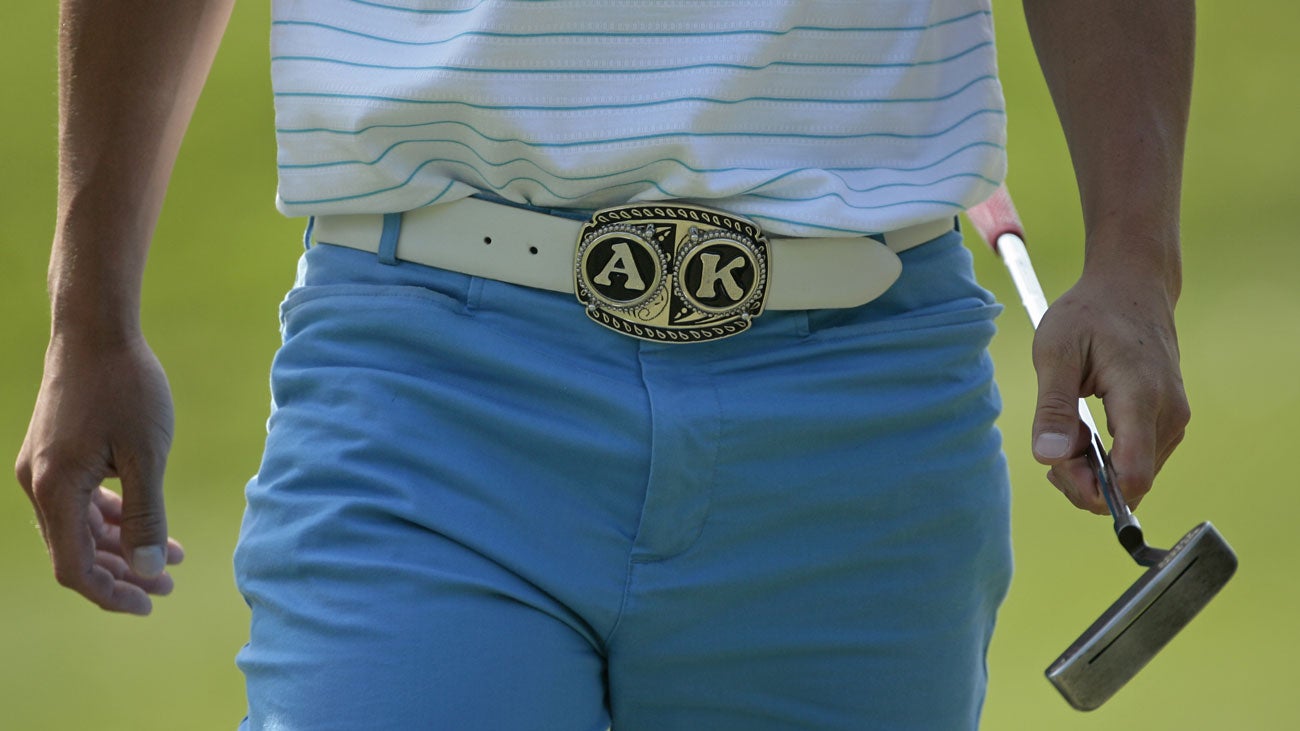
Ah, yes, the belt buckle. If you remember only a little about Kim, surely you remember his flamboyant, initialed waist-wear. As the story goes, he picked up his first AK buckle at a mall near the University of Oklahoma, where he played on the golf team for three years. Rhinestone-studded buckles soon became his trademark, a fashion statement that aligned with his bad-boy rep and aggressive style of play. Would a second coming of AK be wise to lean back into his signature accessory?
“If I was his marketing advisor, I’d have that buckle somewhere, like on his bag, or as a good-luck charm,” Neirotti said. “But if he does come back with a more mature, serious golf attitude, that may not be the persona he wants to portray.”
As with just about all things AK, we just won’t know until we know, as has long been the case with another American enigma.
ON MAY 25, 2008, HUMAN REMAINS were uncovered in the area of Utah where Everett Ruess was presumed to have gone missing. After a careful analysis of the bones, including DNA testing, scientists believed that they had cracked the code on a 75-year-old mystery.
The discovery made national headlines, but not everyone, including Utah’s state archaeologist, was convinced the bones belonged to Ruess. After yet more testing — this time by the Armed Forces DNA Identification Laboratory — the skeptics were proven right. The remains were likely those of a young Navajo.
“We go back to where we were a year and a half ago, where we hoped that someday he will be found,” Brian Ruess, Everett’s nephew, told NPR at the time. “You continue to live with the assumption that the mystery will never be solved — but the hope that it will.”
they never found my body, boys
Or understood my mind






